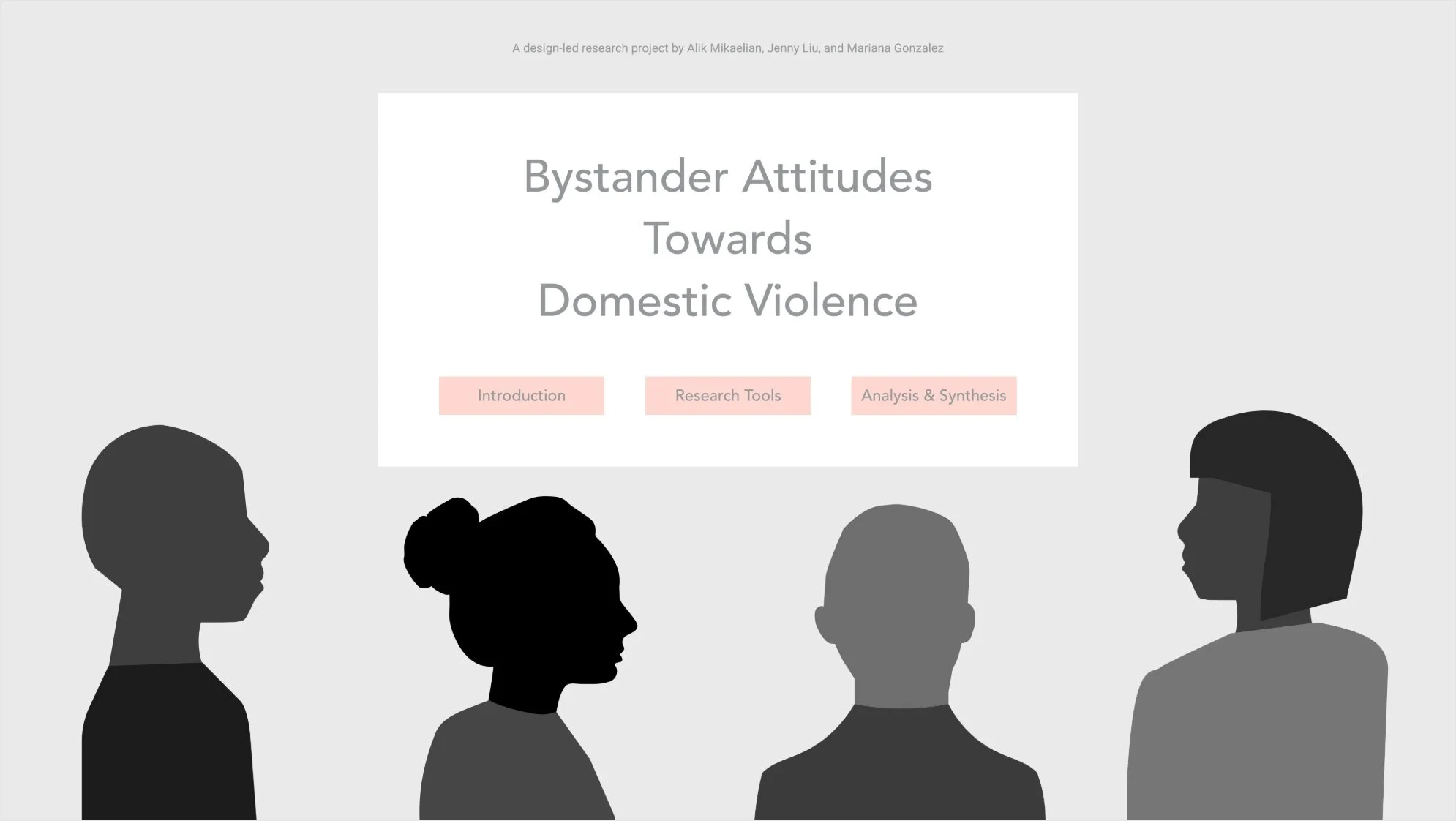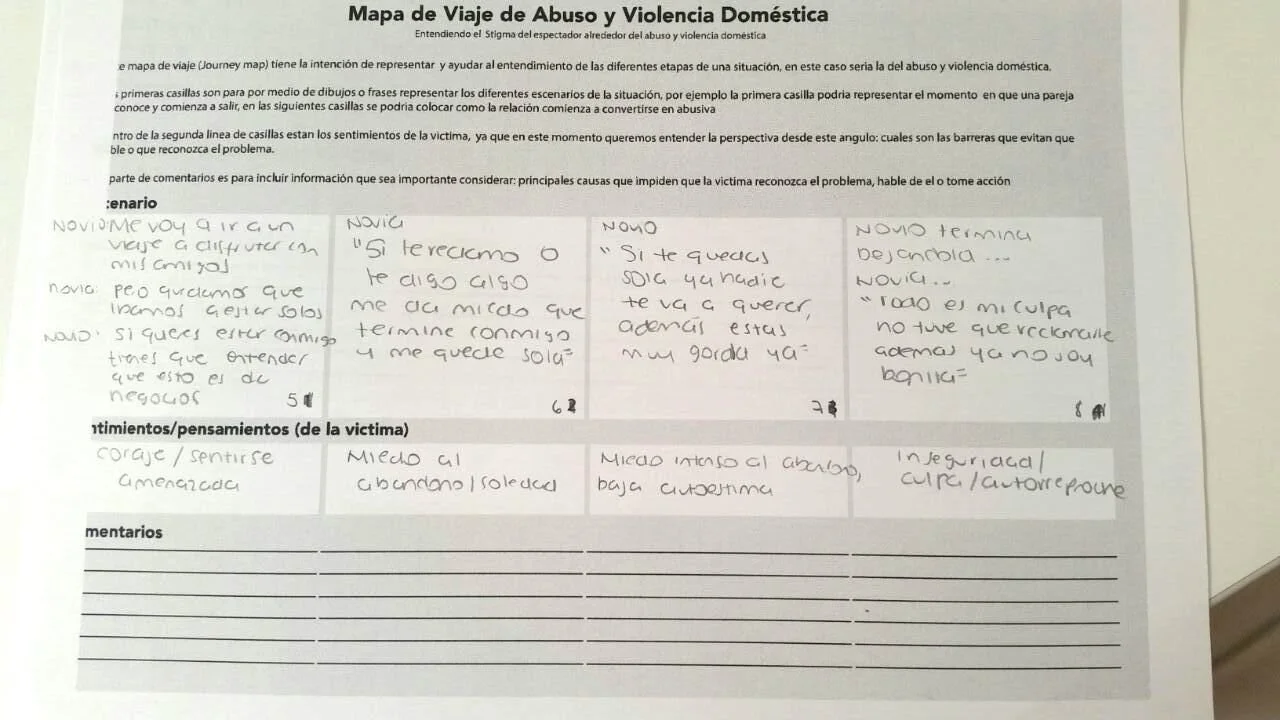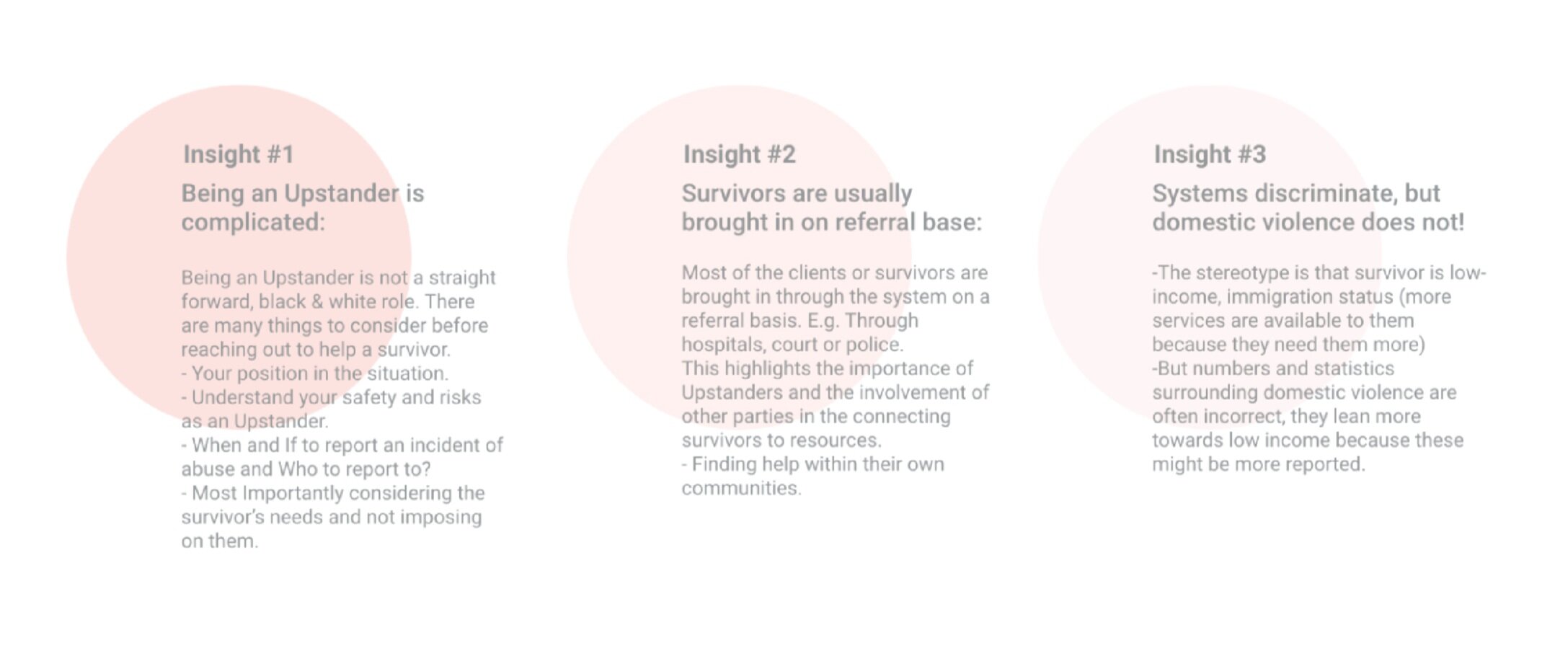Overview
Bystander Attitudes Toward Domestic Violence is a research project that explores the role and influence of the bystander on the survivor decision to seek help. It aimed to understand and identify barriers and opportunities of intervention for domestic violence survivors to get themselves of their situation.
Introduction
For the class Design-Led Research of the program M.F.A Transdisciplinary Design, we started the main project with the curiosity to explore the psychological implications behind survivor behavior in abusive domestic partner relationships and the opportunities to get themselves out of such situations. We recognized that survivors attitudes and behaviors were heavily influenced by a culture that stigmatizes the topic of domestic violence. Furthermore, the culture upheld by bystander attitudes in cyclical feedback manner.
In considering help-seeking behavior on part of the survivor vs bystander, we began our research by better understanding the context of the following three areas:
1. Recognizing an abusive situation
2.Assuming individual responsibility in action and intervention
3. Understanding the interconnection of multiple players in a survivor's network and how that influences a survivor's ability to receive help
This project was developed with Jenny Liu and Alik Mikaelian and the with valuable collaboration of the psychologist Rocio Macias and Maria D'Cruze from Womankind, as well as many participants that shared their thoughts and experiences.
Research Process
Through the research process, we employed different methods that provided us complementary data and allowed us to gain a real understanding of the situation we were exploring. At the same time, some experiences led us to employ other methods. The following map represents our journey through the study.
Bystander Attitudes Towards Domestic Violence
Possibilities for domestic violence survivors to get themselves out of such situations
Timeline: Fall 2017
Team: Jenny Liu, Alik Mikalean
Role: Design Research, Workshop Facilitation.
Collaboration: Womankind
Approaches: Design-led Research, Data Visualization
The Analysis
For the analysis part, we used different approaches to interpret the obtained information. The first one was the Sheet Probe Cumulative Data, where we classified participant responses in various categories of acknowledgement. After classified the responses, we were able to visualize patterns presented in this type of situation.
The second tool we used for analysis was a system map. With all the data gathered in the field research as well as secondary research. We were able to represent the different elements and factors present in Domestic Violence, what allowed us to gain a better understanding.
The third and last tool we used for the analysis, was the Anecdote Grid, that contained raw data placed in a spectrum of a 2x2 chart. The 'x' ax contained the situation where a bystander would be more or less likely to take action or intervene in a Domestic Violence scenario. The 'y' ax contained the situations where a bystander would have the knowledge, awareness, and empathy of Domestic Violence. Once we placed the raw data in the grid, we categorized and sub-categorized in the different types of barriers and points of entry. This Grid allowed us to represent and visualize the situational nature of domestic violence and perception of it from different players involved.
Following an exhaustive research, analysis, and synthesis we were able to present the most meaningful findings and insights.
Project Takeaways
Barriers
Bystander attitudes currently focused on survivor responsibility to seek out help
Bystander often expect that the survivor can easily reach a community on their personal network of help
Goals
Greater awareness for all bystanders to reach out to potential survivors as a resource
Greater awareness of outsider resources could empower and encourage bystander to provide help
Strategies
Bridging gap of access and expertise between informal and formal resources
Changing bystander bias that domestic abuse can be observable in moment to an awareness that it occurs throughout a process










